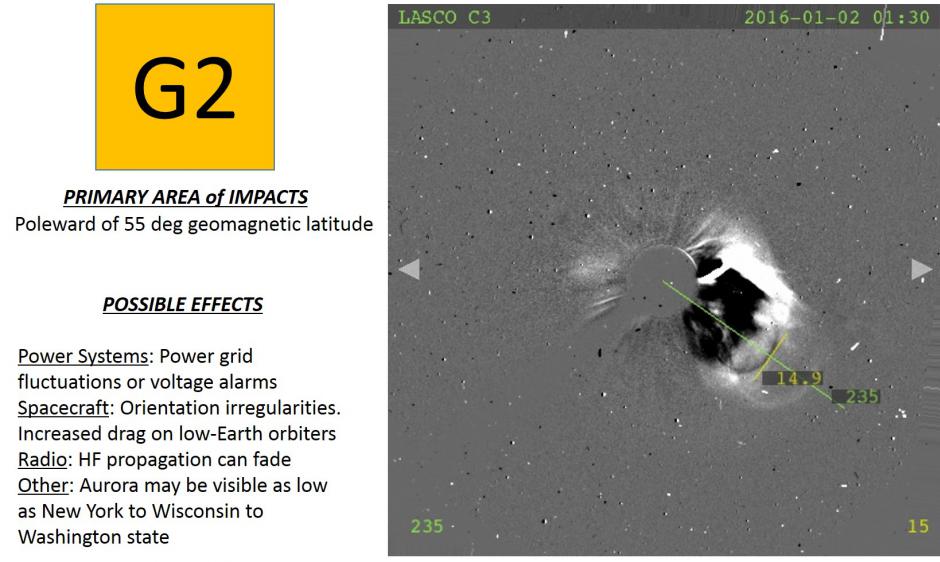
An R1 (Minor) radio blackout followed by an S1 (Minor) solar radiation storm occurred on 02 January 2016. The flare associated with this event was a long duration M2.3 flare that originated from NOAA Region AR12473, located near the Sun's southwestern (bottom right) limb and peaked at 02/0011 UTC (01/1911 EST). After the flare, an enhancement was observed in GOES-13 Proton Flux that crossed the NOAA Scale S1 (Minor) threshold at 02/0430 UTC, resulting in possible minor impacts on HF radio communications in the polar regions. Associated with this event was a fast-moving, asymmetric, partial-halo coronal mass ejection (CME) pictured above. Analysis of this CME, and subsequent WSA-Enlil model output, suggests a possible glancing blow at Earth early to midday EST on 03 January resulting in G1 (Minor) to G2 (Moderate) geomagnetic storms. Stay tuned here for further updates.